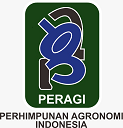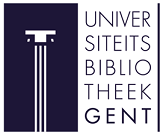The Effect of Buds Location on Stem Cuttings on Sugarcane (Saccharum officinarum L.) Germination
Abstract
The purpose of the study was to determine the extent of the effect of using planting material (seeds with buds on different segments of one stem on germination in an effort to improve the quality of sugarcane cultivation techniques. This research method used a Randomized Block Design (RBD) experiment with three replications. The detail treatment was as follows: M1: budding eyes number 7b M2: budding eyes number 8, M3: budding eyes number 9 M4: budding eyes number 10, M5: budding eyes number 11, M6: budding eyes number 12, M7: budding eyes number 13, M8: budding eyes number 14, M9: budding eyes number 15. Using the Excel data analysis tool, the results showed a very significant effect on the acceleration of germination and dry weight of sprouts, as well as a significant effect on the number of leaves, number of roots, length roots, and increased wet weight due to the treatment of the location of the buds on the stem cuttings of sugarcane plants acceleration of germination and root length as well as wet weight and dry weight to The best sprouts were indicated by the treatment of the location of the 11th segment (M5) buds. The highest number of leaves and number of roots was indicated by the location of the buds 12 (M6). The acceleration of increasing the number of leaves, number of roots, root length, wet weight and dry weight of the lowest sprouts is always indicated by the location of the shoots on Section 7 (M1).
Keywords
Full Text:
PDFReferences
Addy, H. S., Wahyudi, A. H. S., Sholeh, A., Anugrah, C., Iriyanto, F. E. S., Darmanto, W., & Sugiharto, B. (2017). Detection and response of sugarcane against the infection of Sugarcane mosaic virus (SCMV) in Indonesia. Agronomy, 7(3), 50.
Bassil, N. V, Proebsting, W. M., Moore, L. W., & Lightfoot, D. A. (1991). Propagation of hazelnut stem cuttings using Agrobacterium rhizogenes. HortScience, 26(8), 1058–1060.
Begcy, K., Mariano, E. D., Lembke, C. G., Zingaretti, S. M., Souza, G. M., Araújo, P., & Menossi, M. (2019). Overexpression of an evolutionarily conserved drought-responsive sugarcane gene enhances salinity and drought resilience. Annals of Botany, 124(4), 691–700.
Budi, S., Redjeki, E. S., & Prihatiningrum, A. E. (2016). Effect variety and stratified plantlet nursery to the growth sugarcane (Saccharum officinarum L.) propagated in single bud. Research Journal of Seed Science, 9(2), 42–47.
Carr, M. K. V, & Knox, J. W. (2011). The water relations and irrigation requirements of sugar cane (Saccharum officinarum): a review. Experimental Agriculture, 47(1), 1–25.
Donga, T. K., Vega, F. E., & Klingen, I. (2018). Establishment of the fungal entomopathogen Beauveria bassiana as an endophyte in sugarcane, Saccharum officinarum. Fungal Ecology, 35, 70–77.
Hariyadi, B. W., & Ali, M. (2020). Effect of Giving Growth Regulatory Substances (ZPT) Superior Plant Hormones (Ghosts) on Growth and Yields of Shallots (Allium Ascalonicum L). Agricultural Science, 3(2), 135–143.
Kolesnikov, A., & Lampert, C. H. (2016). Seed, expand and constrain: Three principles for weakly-supervised image segmentation. European Conference on Computer Vision, 695–711.
Lestari, P., Hanani, N., & Syafrial, S. (2019). Technical Efficiency Analysis of Sugar Cane Farming in Malang Regency, Indonesia. Agricultural Socio-Economics Journal, 19(1), 1–8.
Mekonnen, T., Diro, M., Sharma, M., & Negi, T. (2014). Protocol optimization for in vitro mass propagation of two sugarcane (Saccharum officinarum L.) clones grown in Ethiopia. African Journal of Biotechnology, 13(12).
Musa, Y., & Bahrun, A. H. (2021). Application of Trichoderma on single bud Sugarcane (Saccharum officinarum L) seedlings originated from different stems. IOP Conference Series: Earth and Environmental Science, 807(4), 42059.
Musa, Y., Ridwan, I., Ponto, H., Ala, A., Farid, B. D. R. M., Widiayani, N., & Yayank, A. R. (2020). Application of Arbuscular Mycorrhizal Fungus (AMF) improves the growth of single-bud sugarcane (Saccharum officinarum L.) seedlings from different bud locations. IOP Conference Series: Earth and Environmental Science, 486(1), 12122.
Nisak, F., Pratiwi, Y. I., & Ali, M. (2017). The Influence of Immersion Duration and Organic Growing Organics on Sugar Cane (Saccharum omcinarum L) Growth and Yield. AGRICULTURAL SCIENCE, 1(1), 11–26.
Pabendon, M. B., Efendi, R., Santoso, S. B., & Prastowo, B. (2017). Varieties of sweet sorghum Super-1 and Super-2 and its equipment for bioethanol in Indonesia. IOP Conference Series: Earth and Environmental Science, 65(1), 12054.
Sari, I. P., Hidayati, S., Ali, M., & Purwanti, S. (2020). Application of Urban Waste Organic Fertilizer on the Growth of Mustard Plants (Brassica Juncea L.). Agricultural Science, 4(1), 74–84.
Sulaiman, A. A., Sulaeman, Y., Mustikasari, N., Nursyamsi, D., & Syakir, A. M. (2019). Increasing sugar production in Indonesia through land suitability analysis and sugar mill restructuring. Land, 8(4), 61.
Ullah, M., Khan, H., Khan, M. S., Jan, A., Ahmad, K., & Khan, A. W. (2016). In vitro plant regeneration of sugarcane (Saccharum officinarum L.); the influence of variety, explant, explant position and growth regulators. ARPN J. Agric. Biol. Sci, 11, 267–273.
Refbacks
- There are currently no refbacks.



























